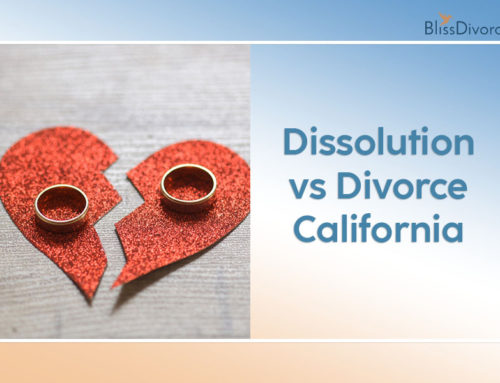When it comes to divorce and dividing marital assets and debts, the whole process can be emotionally draining and complicated. In this article, we will explore the legal procedures involved in ensuring a fair distribution of assets and debts during a divorce in California. We will also discuss the role of divorce mediation in resolving disputes and facilitating a more amicable divorce process.

Source: shutterstock.com / Photo Contributor: 4 PM production
Community property laws in California
The division of property during a divorce depends on whether the couple lives in an equitable distribution state or a community property state. In the 41 equitable distribution states, marital assets will be divided by a court “equitably” between the two spouses.
This does not necessarily mean 50/50. The courts have discretion to give more or less to one spouse based on a number of considerations, including the other spouse’s separate property. In some states, judges can even award separate property to the other spouse to ensure a settlement is “equitable.” .
Things are more straightforward, in community property states like California. In community property states, a judge will split marital assets 50/50 between the two spouses (except in rare circumstances). In both community property and equitable distribution states a couple can avoid having a judge split up assets by reaching an agreement on their own.
What is community property? In California any asset or debt acquired during the marriage is presumed to be community property, unless it was an inheritance or gift. It doesn’t matter if the asset is in the name of just one spouse. As long as it was acquired during the marriage it is presumed to be community property.
In a divorce community property is typically split 50/50. This may include real estate, retirement accounts, investments, and even debts such as mortgages and credit card balances.
The opposite of community property is separate property which consists of assets and debts acquired before marriage, received as a gift or inheritance during the marriage, or acquired after the “date of separation” (the date one spouse states their intent to get divorced and starts acting accordingly). Separate property is not part of marital property and remains with the original owner.
It is crucial for spouses to understand the difference between community and separate property to ensure a fair division of assets and debts.
Key steps to take when dividing assets and debts
Identify and list all assets and debts
The first step in dividing community property is to create a comprehensive inventory of all assets and debts. This may include bank accounts, real estate, vehicles, retirement accounts, investments, personal property, and outstanding debts, such as mortgages, credit card balances, and loans. Both spouses are required by California law to disclose all financial information, including separate property. It’s the law and it’s the only way to ensure a fair distribution.

Source: shutterstock.com / Photo Contributor: VGstockstudio
Determine community and separate property
Next, you and your partner need to categorize each asset and debt as either marital or separate property. Marital property, hence the term, refers to the assets and debts acquired during the marriage.
Separate property, on the other hand, refers to assets and debts owed before the marriage or acquired through inheritance or gifts during the marriage. If it is unclear or there are disagreements whether something is community or separate property, it may be helpful to consult with a mediator, lawyer or financial expert to ensure accurate categorization based on California’s community property laws.
Appraise and value assets
It is important to determine the fair market value of all assets to ensure a fair distribution. This may involve hiring professional appraisers, especially for high-value items such as real estate, business interests, or collectibles. Many people these days use online resources, such as Zillow or KellyBluebook.com, to estimate the value of assets.
Accurate valuation is crucial to avoid any disputes during the negotiation process and ensure that both parties receive their fair share of the marital property.
Negotiate and agree on division
Once the assets and debts have been identified, categorized, and valued, you can negotiate and agree on how to divide them. This process may involve discussion and compromise to reach a fair and equitable distribution of marital property and debts. Couples can choose to negotiate independently, through divorce mediation, or, if need be, with an attorney.
While community property law gives each spouse a 50% right to all marital assets, you and your spouse have the right agree to whatever division of community property you would like. For example, you might agree to receive less than 50% of community assets in exchange for a higher spousal support payment or in exchange for getting to keep the family home. The court will generally approve any arrangement you both agree to, as long as there is no fraud or coercion.
Division of specific assets
Dividing specific assets, such as real estate, retirement accounts, investments, and personal property, requires careful consideration and negotiation. For example, when dividing real estate, couples can choose to sell jointly owned property or transfer equity to one spouse. Sometimes one spouse will continue to live in the home with the children until they graduate from high school or reach a specified age.
Retirement accounts, like 401(k)s, pensions, and IRAs, may require a Qualified Domestic Relations Order (QDRO). This is a court order separate from the divorce decree, to ensure that the non-account-owner receives the share specified in the divorce agreement.
Investments, such as stocks and bonds, should also be carefully evaluated and divided based on their current value, potential for future growth, and tax implications. Personal property, including household items and collectibles, should be divided equitably, taking into consideration the sentimental value and practical use of each item. Personal effects like clothing and inexpensive jewelry typically remain with the spouse who owns them.

Source: shutterstock.com / Photo Contributor: wutzkohphoto
Division of debts
When dividing debts, it’s important to determine which debts are joint and which are separate. Separate debts are the responsibility of the individual spouse who incurred them.
Joint debts are typically those incurred during the marriage and are the responsibility of both spouses. In community property states like California, marital debts are generally split 50/50 between spouses, although you can agree otherwise.
It’s crucial to carefully assess the nature of the debt and the ability of each spouse to pay their share, considering factors such as income, earning potential, and financial resources. It’s also important to recognize that lenders are not bound by divorce agreements. Your divorce agreement might say you are no longer responsible for a debt, but if you are a borrower on the account you can still be held responsible by the creditor.
Tax considerations and implications
When dividing assets and debts during a divorce, it is crucial to understand the tax implications associated with the distribution of certain assets. Overlooking tax considerations can lead to unforeseen financial burdens.
Transferring or withdrawing funds from retirement accounts, such as 401(k)s or IRAs, may trigger taxes or penalties if not handled correctly. Additionally, selling assets like real estate or stocks can result in capital gains taxes.
In order to minimize the tax burden and ensure a fair outcome, both spouses can consult with a tax professional or financial advisor to understand the potential consequences of various asset division scenarios. This guidance helps couples make informed decisions about the most tax-efficient way to divide their assets and debts while still achieving an equitable distribution.
Collaborative approach
In some cases, it is essential for individuals going through a divorce in California to seek assistance in reaching an agreement. You might want to consider divorce mediation as a way to reach a fair distribution of assets and debts rather than a California divorce lawyer.
This alternative dispute resolution method aims to foster cooperation, communication, and compromise between the parties. As a result, having a more easygoing and cost-effective divorce process.
The mediator’s role isn’t to make the decisions. Instead, they facilitate discussions, provide legal information, and help the couple explore options to reach mutually satisfactory agreements.
Mediation can be particularly helpful in creating a customized plan that reflects their unique needs and circumstances, ensuring that both parties’ needs and interests are taken into consideration.
A new approach to reaching an agreement with less conflict is digital mediation. This highly effective approach to resolving disagreements is offered by BlissDivorce.

Source: shutterstock.com / Photo Contributor: EyeFound
Conclusion
Dividing assets and debts during a divorce is a complex and emotional process that requires careful consideration and negotiation. Divorce mediation, including digital mediation, can be an invaluable tool in helping couples navigate this challenging process while minimizing conflict and promoting collaboration.
By following the steps mentioned above and focusing on open communication, you can work towards a fair and equitable distribution of assets and debts. Thus, allowing you to move forward and rebuild your and your partner’s lives.
*This article is for informational purposes only and is not intended to provide legal advice. If you require legal advice, please contact a licensed attorney in your local area.




